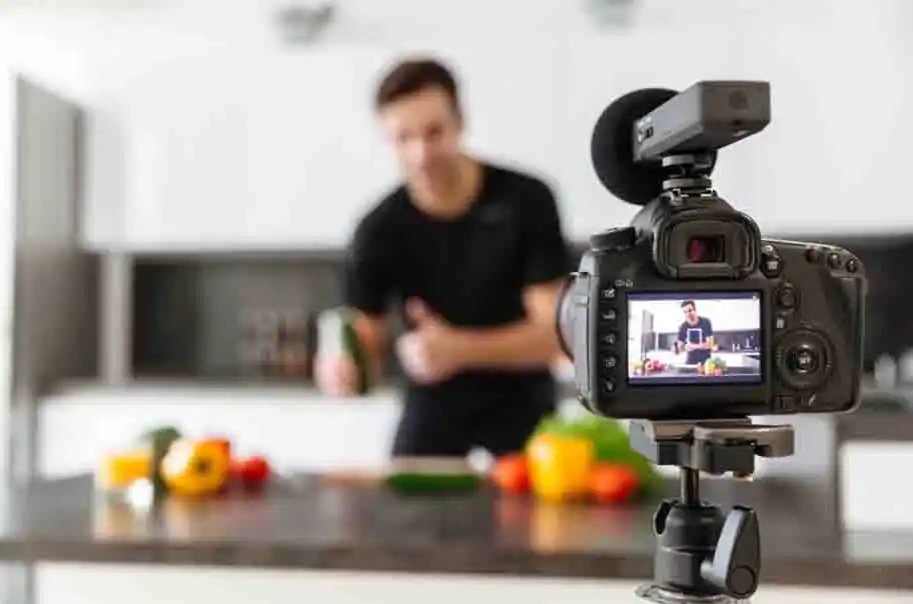Digital video advertising is trending because brands have realized its potential to capture more leads. It has always been noticed that video ads can communicate your brand’s message 95% more effectively than graphic and search ads. Moreover, video ads receive 7.5 times more clicks than other ads.
However, measuring the return on investment is crucial for video ads. The reason being video ad production requires more capital and time. Hence, you should know how to make an advertisement video by bearing the right metrics in mind.
Key Metrics to Track
Online video advertising offers a unique combination of visual narrative and engagement potential. Marketers assess its efficacy using a range of important metrics.
Viewership Metrics
- Impressions: The total number of times prospective viewers see your video advertisement. It is an essential metric to understand your reach.
- Click-through rate: The percentage of impressions on your video advertisement. A high CTR means your ad is engaging and relevant to your target audience.
- Completion rate: The percentage of people who watch your complete advertisement. It measures the viewer’s attention to your video ad.
- Watch time: The mean duration that viewers spend observing your video advertisement.
Engagement Metrics - Likes: The number of users responding favorably to your digital video advertising. It’s a simple way to gauge viewer sentiment.
- Shares: The number of people spread the word about your video advertisement. Shares indicate how viral your content is and its potential for organic traffic.
- Comments: The number of users who comment on your video advertisement. Comments provide qualitative feedback from viewers. You can understand audience insights and perspectives through comments.
- Subscriptions: The number of viewers who become channel subscribers after viewing your video advertisement. It measures the long-term engagement and brand loyalty of your customers.
Conversion Metrics
- Website Traffic: The number of people that click on your video advertisement and then visit your website. It is a direct indication that your ad is spreading brand awareness.
- Lead generation: The number of prospective clients who offer their contact details upon viewing your video advertisement. Leads are very important because they convert into sales.
- Sales: The quantity of goods or services that your video advertisement caused to be sold. It directly measures your ad’s success because sales generate revenue.
- Return on ad spend (ROAS): What is digital video advertising ROI? It is ROAS! The ratio of your video advertisement’s revenue to its expense. It determines the overall profitability of your campaign.
Attribution Models
Now, you will be able to increase your ROAS if you understand the psychology of your consumers. One way to do this is through attribution models. These models assess the touchpoint in a customer journey where most conversion decisions occur. In simple terms, these models tell you why and when a customer decides to purchase the product. Then, you can put more effort into these touchpoints to improve your conversion rate.
Last Click Attribution
It credits the last touchpoint of online video ads for the conversion. For example, a video ad in the BOFU might work better for customers than ads in the previous two funnels. However, such attribution can underappreciated the effectiveness of earlier touchpoints.
First Click Attribution
It works opposite to last-click attribution. You might have understood by now that first-click credits are the first touchpoint of the customer journey. Such attribution is credible for leads actively looking for the product and is predetermined to buy it.
Linear Attribution
This attribution model credits all touchpoints equally. The metrics show an equanimous amount of impressions and conversion rates at all touch points. Therefore, you can say that video ads that follow this model need an overall strong campaign for effectiveness.
U-Shaped Attribution
U-shaped attribution is quite an attractive model. It credits both the first and last touchpoints of the consumer journey. Hence, you need a strong start and an excellent finish to create video ads that convert. However, U-shaped touchpoints also reveal a disconnect between awareness and conversion.
Custom Attribution
Custom attribution allows digital video advertising companies to create an attribution model based on business goals and consumer data. This customized model allows marketers to create individual strategies for each campaign.
Tools and Platforms
You will need a few tools and platforms for digital video advertising. These platforms display performance metrics and all the data related to your video advertising campaigns.
Google Analytics
Google Analytics your video advertising campaigns in the following ways:
- Set up goals: You can define the specific actions you want the users to take after watching your video ad.
- Track conversions: You can measure the number of users who take action on your ads.
- Analyse audience demographics: You can analyse the characteristics of your audience.
- Monitor mediums: You can also monitor the conversion rate throughout the campaign.
Video Platform Analytics
There are many analytics tools available on platforms such as LinkedIn and Meta. These platforms are:
- YouTube: You can track audience engagement rates through YouTube analytics. Digital video advertising trends are also visible on this platform.
- Meta: It is best for social media ads. You can monitor the engagement rates and conversions through Meta. Audience insights are also available.
- TikTok: It is great for getting viral. You can also check engagement metrics and trending topics on TikTok.
Third-Party Analytics
You can also use third-party analytics tools to measure the effectiveness of your video ad campaigns.
These tools are of four types:
- Cross-platform tracking tools: These tools will measure the performance across multiple platforms.
- Advanced attribution models: They analyse the touchpoints mentioned above.
- Custom reporting: You get automated reporting according to your customised needs.
- Integration tools: You can integrate multiple tools across various platforms for a comprehensive video marketing campaign.
Tips for Optimizing Video Ad ROI
Here are a few tips to get a higher return on your ad campaigns:
- Precisely target your audience for better lead quality.
- Use appropriate creatives and brand strategy to captivate your audience’s attention.
- Use A/B testing for continuous improvement.
- Leverage multiple channels for better brand awareness.
Measuring ROI is essential for digital video advertising. You can track various metrics to assess the effectiveness of your ads. Understanding attribution models also helps you understand the impact of different touchpoints on conversions. By choosing one of the best digital video advertising companies, you can optimize your ROAS.

